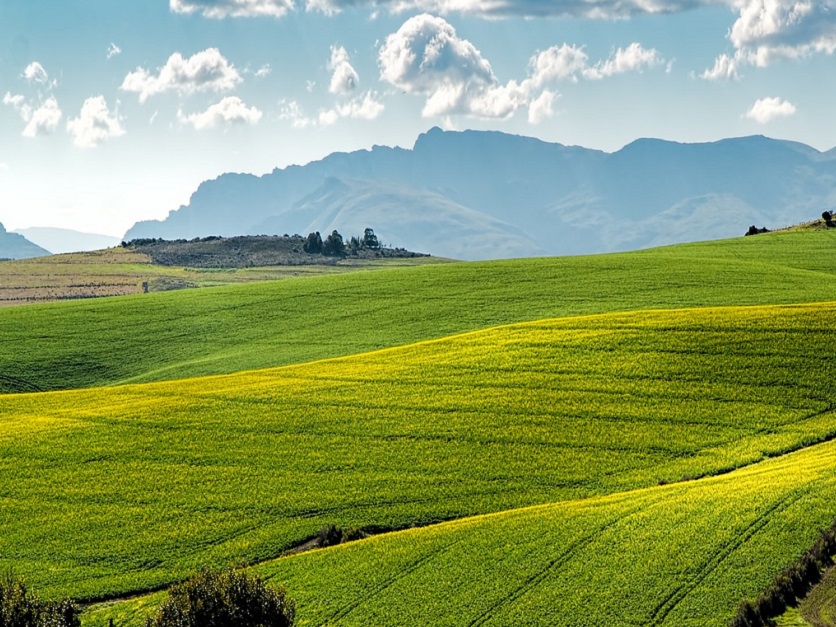WASHINGTON, Feb. 15, 2017 - When USDA Chief Economist Robert Johansson testifies today at the House Agriculture Committee, he won’t be painting a rosy picture of the farm economy. The value of farmland across the country continues to decline while credit remains tight for producers and net incomes fall.
 Low commodity prices, falling incomes, dropping land values and rising demand for credit are weighing down the nation’s agricultural producers, but Johansson told Agri-Pulse he will also be stressing to lawmakers that the farm economy is still strong when considered in a historical perspective.
Low commodity prices, falling incomes, dropping land values and rising demand for credit are weighing down the nation’s agricultural producers, but Johansson told Agri-Pulse he will also be stressing to lawmakers that the farm economy is still strong when considered in a historical perspective.
Conditions are nowhere near those that created the disaster of the 1980s, but many farmers are hurting, National Farmers Union President Roger Johnson told Agri-Pulse in an interview. Johnson said that’s the main message that NFU is stressing to lawmakers, but House Agriculture Chairman Mike Conaway said Tuesday he is well aware of the situation.
“As we prepare for the upcoming farm bill reauthorization, farmers and ranchers are enduring challenging times,” Conaway said in a statement. “USDA reported this week that net farm income fell 45 percent from 2013 to 2016, the largest three-year percentage drop since the Great Depression. Net farm income is expected to decline even further in 2017.”
A USDA forecast recently predicted that net farm income will fall this year by 8.7 percent to $62.3 billion. That would be the lowest level since 2002.
Speaking in a new audio posting on USDA’s website, Johansson listed the factors weighing down the farm economy, but he also stressed that in 2017 cash receipts are expected to remain about equal to last year. Asked if that is a sign the farm economy slide was bottoming, Johansson wavered.
“That’s a tough one to call,” he said. “I will just say that on an aggregate level, we’re still on solid foundations.”
The foundations may be solid, but Dan Bigelow, an analyst with USDA’s Economic Research Service, said conditions are worsening. Based on ERS data and statistics collected by three Federal Reserve Banks, Bigelow said American farms will continue to lose value throughout 2017.
Just last week the Kansas City Fed released a report showing that farmland values in the fourth quarter of 2016 dropped an average of 6 percent from the same period a year earlier and the value of ranch or pasture land fell 7 percent.
The biggest drop was in Kansas, where the value of non-irrigated land fell by 13 percent. The Kansas City Fed oversees Colorado, Kansas, Nebraska, Oklahoma, Wyoming, western portions of Missouri and northern parts of New Mexico.
“These downgrades were the largest since the Great Recession of 2007-09 but were relatively small compared to declines in the 1980s,” the report concluded. “Decreases in ranchland values in Kansas, Nebraska and Missouri were the largest since 2002.”
Bigelow called farmland value a “critical barometer of the health of the farm sector overall,” noting that “real estate values account for more than 80 percent of assets on the farm sector balance sheet.”
It’s also a bad sign for times to come, NFU’s Johnson said.
“When land values start going down, they’re a leading indicator of financial trouble because land is always the residual deposit of profitability – or lack thereof – on the farm,” he said. “All the indicators are pointing in the same direction. There’s trouble on the horizon.”
One of those key indicators, USDA’s Johansson said, is the debt to asset ratio on farms. Cash-strapped farmers are taking on more debt, but the value of their land and assets is shrinking. On average, Johansson said, the debt to asset ratio is expected to rise this year from 13.1 percent to 13.9 percent.
For comparison, the debt to asset ratio was roughly 22 percent at the peak of the farm crisis in the 1980s, according to USDA historical data.
In 2013, farmers held about $111 billion in assets, said Bob Young, chief economist with the American Farm Bureau Federation. By the end of this year, that’s expected to fall to $80 billion.
That’s a $31 billion drop, but the debt to asset ratio also shows that farmers dig themselves further into debt to keep on planting in times of low prices and profits.
Farmers across the country will rack up an additional $20 billion in debt this year, Young said.
About 6 percent of U.S. farms are highly leveraged, according to a chart that USDA officials used to brief House aides this week ahead of today’s House hearing. That’s the highest it’s been in a decade.
“You add all that up, you end up with a farm asset base that’s off by $30 billion and farm debt that’s up by $20 billion,” Young said in an interview. “I can see the storm clouds on the horizon, but it’s not raining here yet.”
#30


